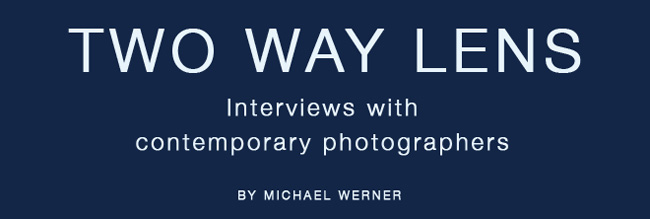What inspired you to start taking photographs, and what is the primary inspiration for you to keep working in this field?
JF
As a five year old I took a self-portrait, became fascinated with photography and have been photographing ever since. That self-portrait has become part of a lifelong series which continues to sustain me. When I saw that self-portrait made as a five year old, I decided to become the photographer of my family’s life and grew to be passionate about the medium. I was inspired to dedicate my life to photography by my mentors, Minor White and Imogen Cunningham. I feel fortunate to have been accepted into the experimental graduate program, Toward A Whole Photography, directed by White at the Massachusetts Institute of Technology. From Minor, I learned the importance of superb craft and unique techniques which have helped me make enduring photographs. Further, Minor instilled in me the value of becoming an expert in the history of photography and the importance of discussing the medium in a lucid and insightful manner. Lastly, by his example, I was moved by Minor to become a generous and accessible teacher of photography. As an assistant to Imogen Cunningham, I observed how she devoted her life to photography; when I worked for her she had been a photographer for nearly 75 years. She was my link to Stieglitz, Weston, O’Keeffe, Kahlo, Kasebier, Lange, Curtis, Coburn and Strand, among others. From Imogen, whose work was uncommonly wide-ranging, I was empowered to be an artist comfortable working as a teacher, as a personal documentary photographer and portraitist, as an architectural photographer, as a street and landscape photographer, in still life work as well in commercial photography. I think about both Minor and Imogen every day and feel privileged to be able to share what I learned from them with students. Another memorable experience was participating in an extended workshop in Yosemite National Park, California with Ansel Adams, Wynn Bullock, Jerry Uelsmann, Judy Dater and Jack Welpott, among others.
MW
In your opinion and experience, how can emerging photographers evaluate themselves as ready to start promoting their works and seek broader exposure for their photographs?
JF
I think it useful for emerging photographers to become thoroughly knowledgeable about their particular approach to the medium. They should be substantively familiar with historical and contemporary practitioners who share similar concerns. This may help emerging photographers to gauge their work against others, evaluate how it measures up and invent strategies to distinguish their work from those working the same terrain. Finding perceptive, experienced and articulate experts in photography and other visual media who are able to help with feedback, critical insights, editing and discussing how the work fits into a particular context is essential.
MW
What is one vital action you would recommend photographers undertake to find their audience, be included in exhibitions, and gain professional representation?
JF
One vital action is to be fearless in showing their work to those in positions to exhibit, publish and support their work. Again, knowing how their photography compares to those with similar photographic concerns and inventing strategies to differentiate their work from others, even in subtle ways, would be helpful in gaining recognition. The ability to discuss with clarity their own photographic strategies and myriad aspects of the medium is crucial.
MW
How did it come about that you achieved the status of successful, professional photographer? What steps were involved in reaching your level of success?
JF
Creating a dense archive of wide-ranging photography has been helpful. Working consistently and passionately in completing varied, provocative self-assigned projects has helped in finding an audience. I applied for grants and fellowships and have enjoyed success. I have traveled to centers of art and photography such as New York seeking to find exposure for my work.
 2 from the series, "Pleasures and Terrors of Kissing"
2 from the series, "Pleasures and Terrors of Kissing" 3 from the series, "Pleasures and Terrors of Kissing"
3 from the series, "Pleasures and Terrors of Kissing" 5 from the series, "Pleasures and Terrors of Kissing"
5 from the series, "Pleasures and Terrors of Kissing" 20 from the series, "Pleasures and Terrors of Kissing"
20 from the series, "Pleasures and Terrors of Kissing" 39 from the series, "Pleasures and Terrors of Kissing"
39 from the series, "Pleasures and Terrors of Kissing" 40 from the series, "Pleasures and Terrors of Kissing"
40 from the series, "Pleasures and Terrors of Kissing" 46 from the series, "Pleasures and Terrors of Kissing"
46 from the series, "Pleasures and Terrors of Kissing" 74 from the series, "Pleasures and Terrors of Kissing"
74 from the series, "Pleasures and Terrors of Kissing" 113 from the series, "Pleasures and Terrors of Kissing"
113 from the series, "Pleasures and Terrors of Kissing" 119 from the series, "Pleasures and Terrors of Kissing"
119 from the series, "Pleasures and Terrors of Kissing"© all images James Friedman
